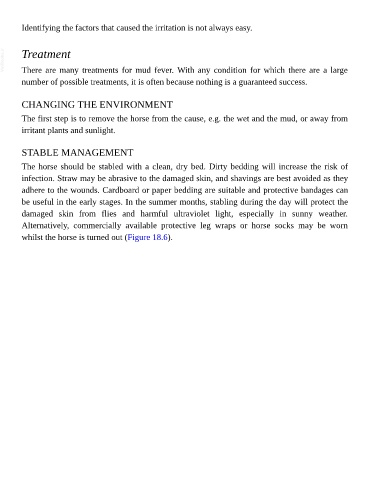Page 825 - The Veterinary Care of the Horse
P. 825
Identifying the factors that caused the irritation is not always easy.
VetBooks.ir Treatment
There are many treatments for mud fever. With any condition for which there are a large
number of possible treatments, it is often because nothing is a guaranteed success.
CHANGING THE ENVIRONMENT
The first step is to remove the horse from the cause, e.g. the wet and the mud, or away from
irritant plants and sunlight.
STABLE MANAGEMENT
The horse should be stabled with a clean, dry bed. Dirty bedding will increase the risk of
infection. Straw may be abrasive to the damaged skin, and shavings are best avoided as they
adhere to the wounds. Cardboard or paper bedding are suitable and protective bandages can
be useful in the early stages. In the summer months, stabling during the day will protect the
damaged skin from flies and harmful ultraviolet light, especially in sunny weather.
Alternatively, commercially available protective leg wraps or horse socks may be worn
whilst the horse is turned out (Figure 18.6).

